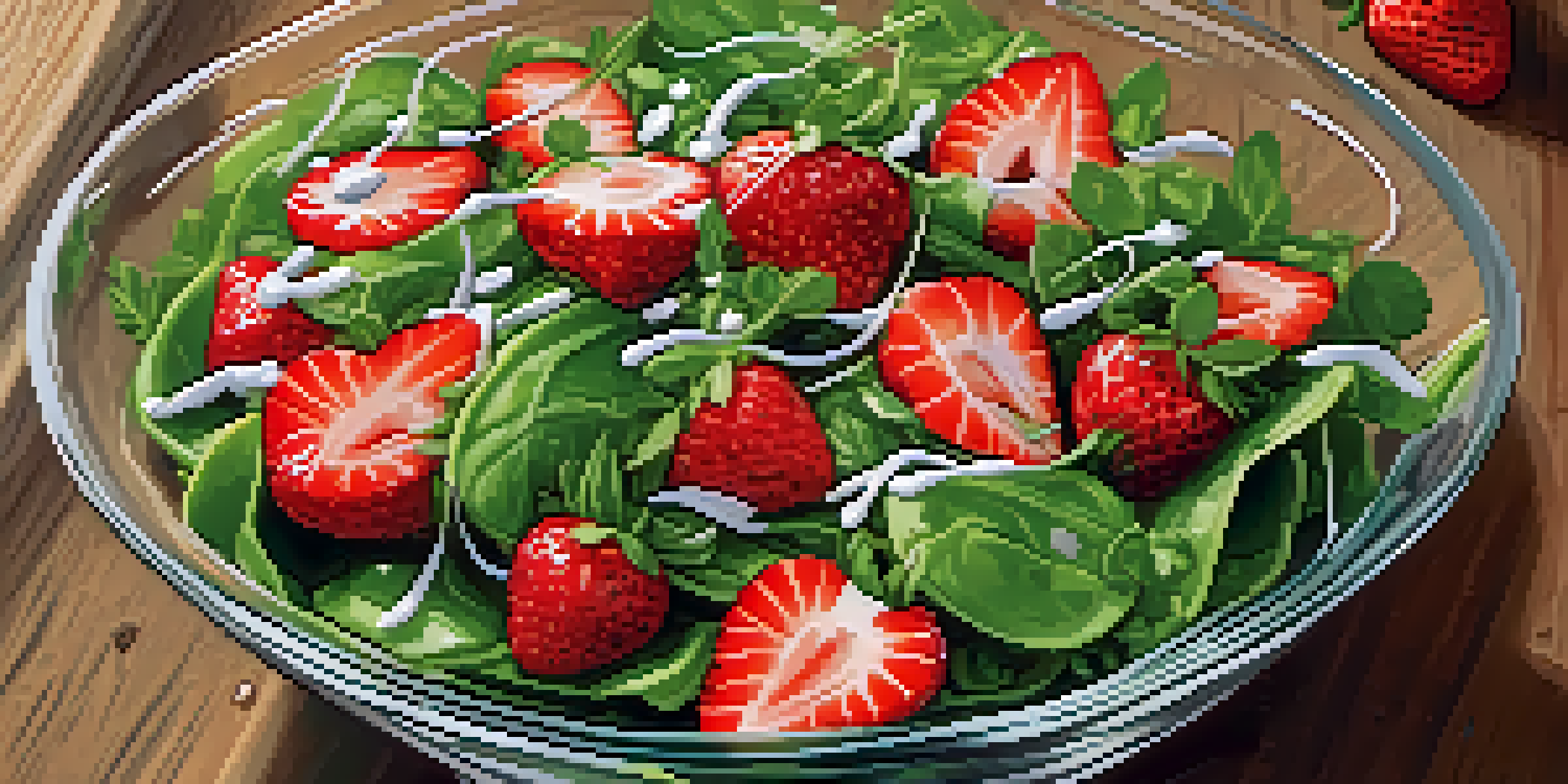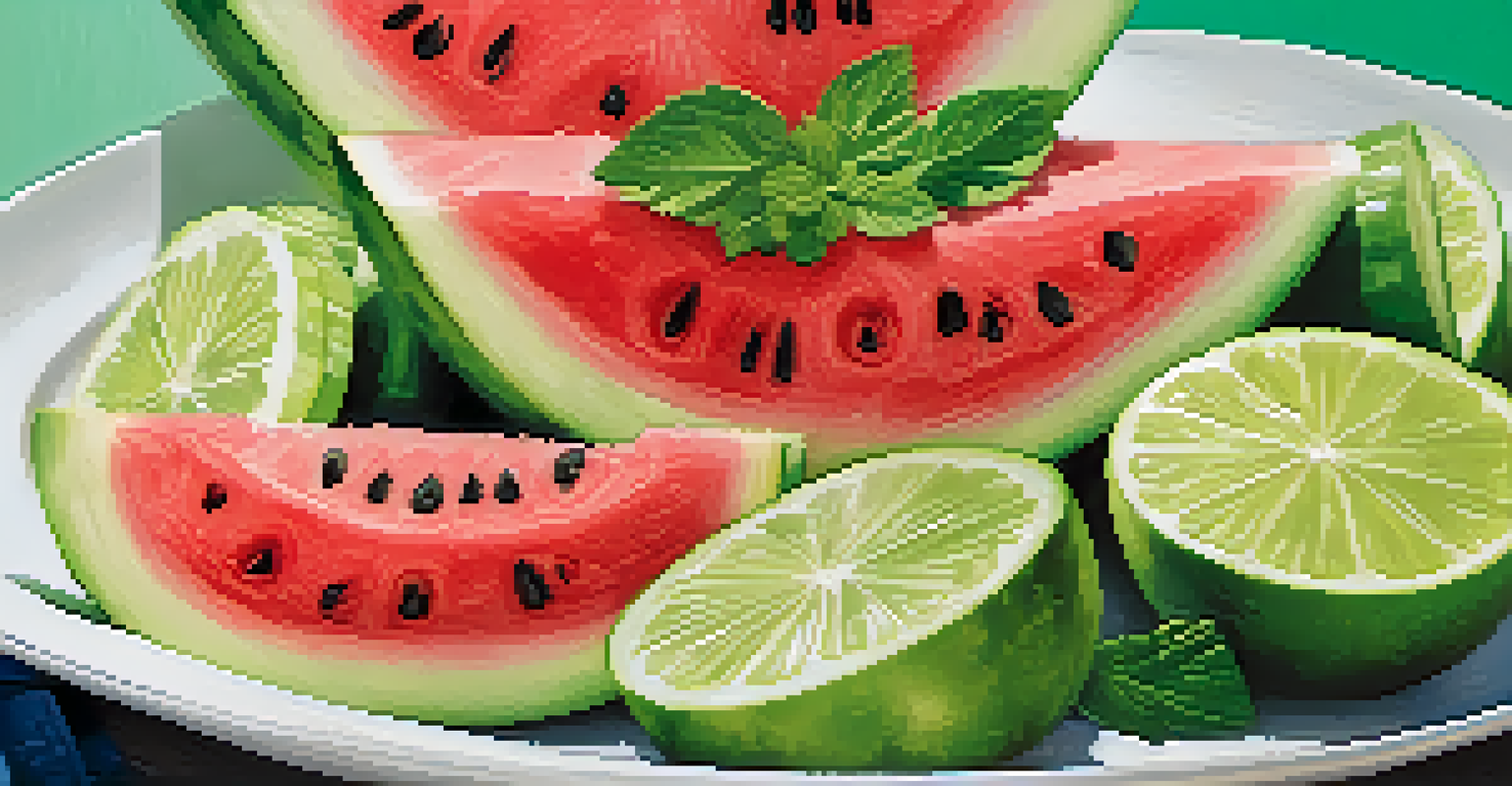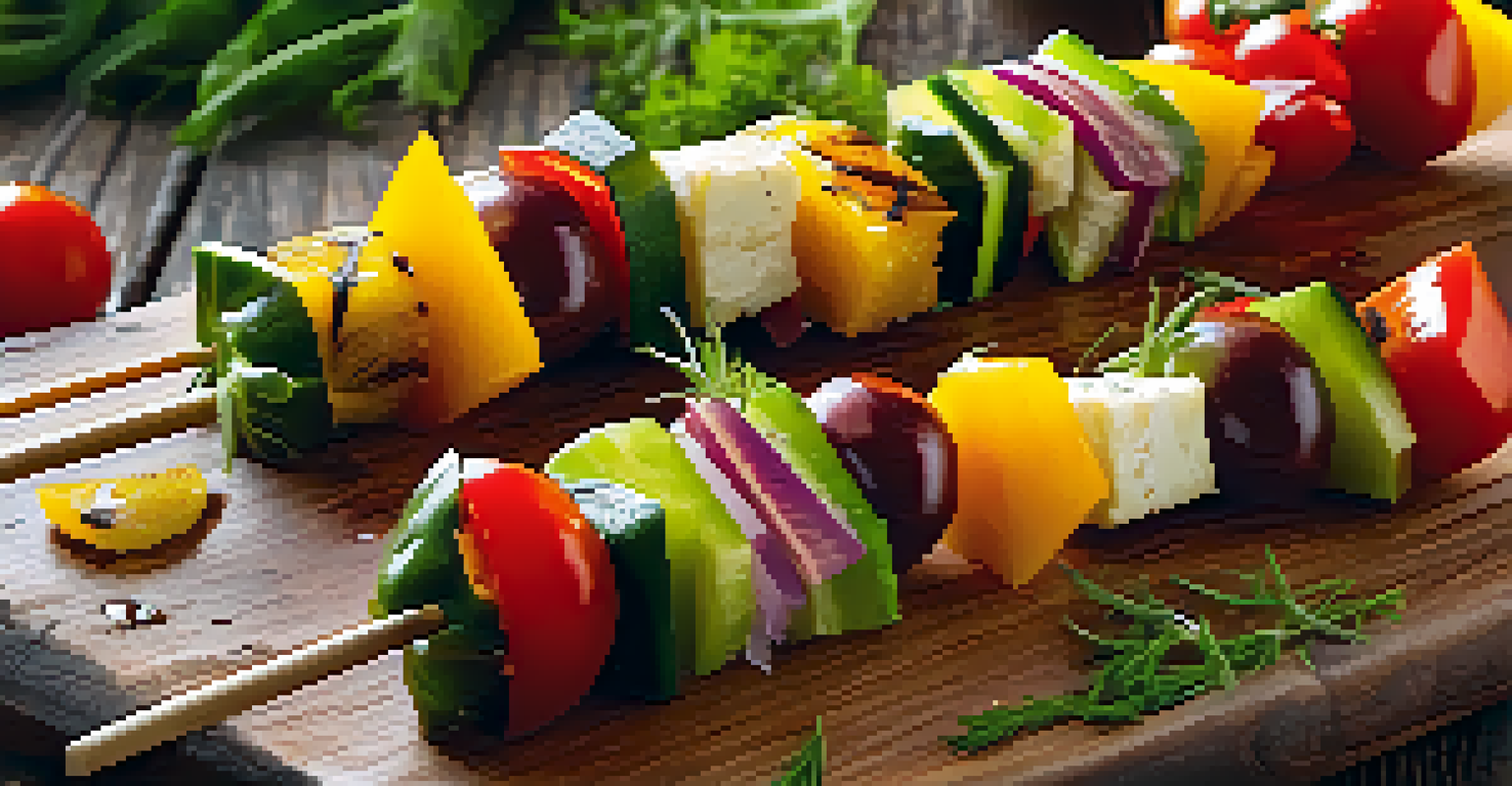The Art of Pairing Fruits and Vegetables for Taste Boost

Why Pairing Fruits and Vegetables Works Wonders
Pairing fruits and vegetables can elevate your dishes in surprising ways. The natural sweetness of fruits can balance the earthiness of veggies, creating a harmonious flavor profile. For instance, combining juicy strawberries with peppery arugula offers a delightful contrast that's both refreshing and satisfying.
Let food be thy medicine and medicine be thy food.
When you think about it, our taste buds crave complexity. By mixing fruits and vegetables, you introduce different textures and flavors that excite the palate. Imagine the crunch of bell peppers alongside the softness of ripe peaches; it’s a delightful symphony of tastes that keeps you coming back for more.
Moreover, these combinations often enhance the nutritional benefits of your meals. Fruits and vegetables come packed with vitamins, minerals, and antioxidants, and when paired, they can complement each other’s health benefits, making your dish not only tastier but also healthier.
Classic Combinations: Fruits and Veggies that Shine Together
Some pairings are so classic, they’ve become staples in many kitchens. Think of the iconic combination of tomatoes and basil, where the sweetness of ripe tomatoes is perfectly complemented by the aromatic freshness of basil. This duo is not only delicious but also visually appealing, making your dishes pop.

Another timeless pairing is cucumber and watermelon. The crispness of cucumber combined with the juicy sweetness of watermelon creates a refreshing summer salad that’s hard to resist. Adding a squeeze of lime can elevate this combination even further, bringing out the best in both ingredients.
Fruits and Veggies Elevate Dishes
Combining fruits and vegetables creates a delightful balance of flavors and textures that enhances both taste and nutrition.
Don’t forget about the dynamic duo of carrots and oranges. Roasted carrots drizzled with orange juice offer a sweet and savory delight that’s perfect for any meal. This combination showcases how fruits and vegetables can work together to create a balanced dish that pleases all the senses.
Exploring Unconventional Pairings for Unique Flavors
While classic pairings are tried and true, stepping outside the box can lead to exciting discoveries. For example, combining avocado with grapefruit might sound unusual, but the creamy texture of avocado balances the tartness of grapefruit beautifully. This unexpected alliance can add a zing to your salads or brunch dishes.
You are what you eat, so don’t be fast, cheap, easy, or fake.
Another unconventional pairing is beets with apples. The earthiness of beets pairs surprisingly well with the crisp sweetness of apples, creating a vibrant dish both in color and taste. A simple beet and apple salad can be a showstopper at any gathering.
These unique combinations not only surprise the palate but also add intrigue to your meals. Don’t hesitate to experiment; sometimes, the most delightful flavors emerge from the most unexpected pairings.
The Role of Seasonality in Pairing Choices
Seasonality plays a crucial role in determining which fruits and vegetables pair best together. When you choose ingredients that are in season, you're not only ensuring peak flavor but also supporting local farmers. For instance, pairing summer peaches with fresh basil is a match made in heaven during warm months.
In the fall, root vegetables like sweet potatoes and apples come into their own, creating a cozy, comforting dish that reflects the season’s essence. Roasting them together brings out their natural sweetness, making for a deliciously satisfying meal.
Classic and Unconventional Pairings
Familiar combinations like tomatoes and basil shine alongside unique pairings such as avocado and grapefruit, offering endless culinary possibilities.
By aligning your pairings with the seasons, you also create a more sustainable kitchen. This practice not only enhances the flavor of your dishes but also encourages a deeper connection with the food you eat.
Tips for Balancing Flavors in Your Pairings
Balancing flavors is key when pairing fruits and vegetables. Start by considering the dominant flavors of each ingredient. For example, if you’re using a strong-flavored vegetable like kale, pairing it with a sweeter fruit like mango can create a balanced dish that’s pleasing to the palate.
Texture is another important aspect to consider. Combining crunchy vegetables with soft fruits can create a satisfying mouthfeel. Think of a salad that features crunchy radishes and soft, ripe peaches; this contrast adds an exciting element to each bite.
Lastly, don’t shy away from adding herbs and spices to enhance your pairings. A sprinkle of mint over a salad of cucumber and strawberries can add an aromatic touch that ties all the flavors together beautifully.
Incorporating Fruits and Vegetables into Everyday Meals
Incorporating fruits and vegetables into your daily meals doesn’t have to be complicated. Start with simple additions to your favorite dishes. For example, tossing some diced apples into your morning oatmeal or adding sliced avocados to a lunchtime sandwich can effortlessly boost flavor and nutrition.
Smoothies are another fantastic way to blend fruits and veggies into your diet. Mixing spinach with bananas and a splash of orange juice creates a delicious, nutrient-packed beverage that’s perfect for a quick breakfast or snack.
Seasonal Ingredients Enhance Flavor
Choosing seasonal fruits and vegetables not only boosts flavor but also promotes sustainability and supports local farmers.
By making small adjustments to your meals, you can enjoy the benefits of these delightful pairings without feeling overwhelmed. The key is to keep it simple and let the natural flavors shine.
Creative Presentation Ideas for Your Paired Dishes
Presentation can elevate your dishes, making them even more appetizing. When serving a salad that combines fruits and vegetables, consider layering the ingredients in a clear bowl. The vibrant colors of strawberries, cucumbers, and leafy greens create a visually stunning dish that’s sure to impress.
Another fun idea is to use skewers for a fresh fruit and vegetable kebab. Alternating between cherry tomatoes, bell peppers, and chunks of pineapple not only looks appealing but also makes for a great finger food option at gatherings.

Don’t underestimate the power of garnishes. A sprinkle of fresh herbs or a drizzle of balsamic glaze can add that finishing touch, turning a simple dish into an eye-catching masterpiece that invites everyone to dig in.